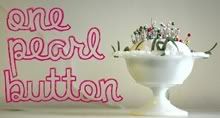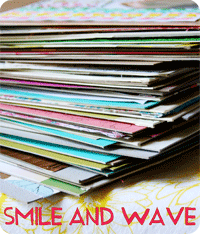This is probably, second only to the bathroom, my least favorite part of cleaning. The kitchen's always got icky food-stuffs that trip-up my mild case of OCD, and as if seeing it up close isn't bad enough - you've gotta get your hands in it. Okay. Now that that's out of the way, I'll stop procrastinating with this entry and help you to get through this. We can all get through it together.
The first thing is to make sure you've cleared off all countertops and work surfaces of any dishes that need washing. If you've got a dishwasher - good for you. Even if you have got one, sometimes there's just too many dishes to fit in one lead and you have to hand wash. I love handwashing dishes (weird, I know). It is a time of the day after the cooking, entertaining, and enjoying the meal that I can digest not just the food, but the whole of the day. It's one of life's uncomplicated processes that allows for remaining efficient, and drifting off into a world of one's own. Int the event that you love to hand wash as much as I do, the following are some tips that will make the nastier bits (i.e. crusted on grease) a cake-walk:
- First, it helps if you have a split-sink; but if you don't, you can create one with a deep rectangular tub that sits atop your countertop or in part of your (perhaps) one great-big sink.
- Here's the order to handwashing dishes that makes it all like butter baby:
- First and foremost, scrape all the food bits off the plates, pots, pans, and pyrex. (Extra points for composting said food bits).
- Now, before even thinking about those dishes, sprinkle a bit of baking soda into each crusty pot, pan and pyrex (and if there are funky cooking utensils - toss them in a large crusty saute pan). Add a bit of hot water, gently agitate the water with a dirty utensil, and set those pots aside for your grand finale!
- Now, regardless of your sink set-up, if you're still with me here - you've got two basins of some sort. On one side, you have a basin filled with warm soapy water; on the other side, a basin filled with warm rinse water with a splash of white distilled vinegar. And of course, you have a dish rack or loving partner/friend to help dry those dishes you're working so hard to clean.
- First, clean, rinse and dry all of the glassware. Second, the plates and bowls. Third, the silverware and cooking utensils.
- And now, for your grand finale: The dreaded greasy, crusty pots and pans. With hot water (do this over the soapy basin), rinse the baking soda out of your pans. Voila! Can you believe it?! Almost every nasty little bit of stuck-on gunk that would have required gobs of harsh chemical cleaners and way too much elbow grease for my style is gone! Just give it a swish in the soapy water, rinse in the vinegar rinse water, throw it on the drying rack - and pat yourself on the back!
The dishes are done, now comes the time for potentially polishing your cabinets if they are wood (you can find the recipe here), or using the all-purpose surface cleaner for any painted surfaces, plastics, enamels, and yes - you heard me - stainless steel (without streaks!) For cutting boards or other work surfaces that regularly have food prepped upon, spray with all-purpose cleaner overnight and allow to absorb. To quickly sanitize any areas, spray with the all-purpose surface cleaner, and follow with a quick spritz or wipe of Hydrogen Peroxide.
- You'll want to be sure and deodorize your microwave: Using 3-5 slices of Lemon, placed in a bowl with 1 cup of water, microwave on HI for 3 minutes. Keep door closed for 3 mins. Open, and wipe down inside of microwave. Deodorized and clean.
- Obviously, your sponges need some TLC too. Perhaps you use dishrags and simply launder them frequently; but if you use sponges, you're probably in the habit of keeping them longer than you should without sanitizing, or just throwing out. Those sponges can be reused and it's easy as pie: Either in the microwave for 3 minutes (in a lidded bowl) or on the stovetop in boiling water - with slices of lemon for good measure. If using the microwave, be ever so careful when removing that lid - the steam is SO hot, and can scald you. Let the water cool for a while, then remove and rinse your freshly sanitized and deodorized sponges in cool water for five minutes.
- If you need more scrubbing power for your basic sponge, but don't want to buy one of those plasticky scrubbers from the shop - here's a great solution and reuse of something that was going to be tossed or recycled at best: take the mesh bag from garlic, onion, you know the type - and cut it to size so you can toss your sponge in there. Wrap with rubber bands or secure with butcher's twine. It's gentle on your dishes, but gets the grubbies off.
- Now of course, you will need to scour and scrub your sink to it's original shine. Recipe to come later today.
- And in the event that you find yourself with clogged drains - I've got the simplest, healthiest, and funnest drain de-clogger you'll ever make and use. Later.
- Oh right, cleaning and deodorizing the refrigerator: This is something I used to do only when I would move from a place (which was FAR too often), but everytime I do it, I see the benefit of doing it more frequently. If you're smelling something funky coming from your fridge, and all offending products have been removed - you're smelling the fridge. It's time to clean the fridge with Antiseptic Soap Spray shelf-by-shelf, and get some new baking soda in there. The classic 16 oz. Arm & Hammer baking soda box should be refreshed every month.
- Last on the list, sweeping and mopping - and I promise to include those recipes for mopping today.
Just think, when you're all done with these steps, you will feel as lovely and safe as she does in her kitchen:












1 comment:
I am loving these tips and recipes - thanks so much for sharing!
Am linking to you from my blog.
Post a Comment